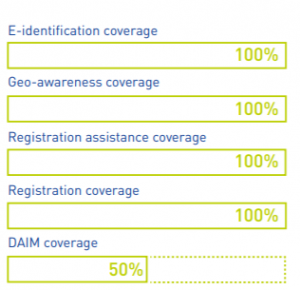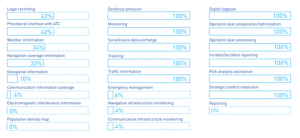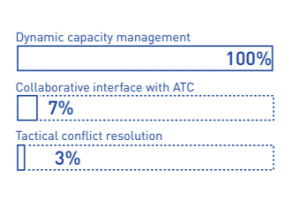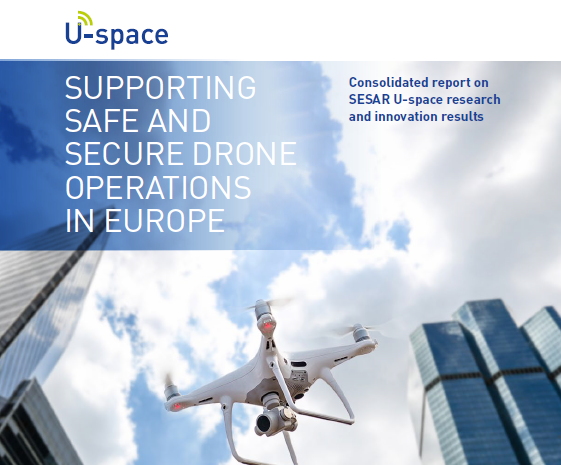An analysis of research activities into European U-Space operations by the SESAR JU between 2017 and 2020 has shown that collectively SESAR U-space research projects have addressed all U1 services and almost all U2 services but only limited coverage was achieved for U3. U4 was not covered by the research activities.
Supporting safe and secure drone operations in Europe published by the SESAR JU presents the consolidated findings of 19 exploratory research projects and demonstration projects aimed at researching the range of services and technological capabilities needed to make U-space a reality. The projects brought together some 25 European airports, 25 air navigation service providers, 11 universities, more than 65 start-ups and businesses, as well as 800 experts, working in close cooperation with standardisation and regulatory bodies, including EUROCAE and EASA.
“In terms of the level of readiness, the projects demonstrated U1 and U2 services were ready for use in environments with low levels of complexity (rural areas, segregated airspace) and a low density of traffic. In these environments, the projects were able to show the feasibility of multiple service provision, strategic deconfliction, as well as the possibility of increasing situational awareness through information sharing. They also demonstrated the importance of reliable tracking and monitoring and addressed the interface with manned aviation. Many technologies were successfully tested and demonstrated, but there is a strong need for performance requirements and system standardisation,” says the report.
“At the same time, the analysis underlined the need to further develop and validate U-space to cater for high complexity/ high density operating environments (urban operations, mixed traffic). This will require further research and innovation, in particular in relation to conflict management, emergency management and monitoring services – It is these services that will make U-space scalable and robust to support dense and complex operations in U2 and to ensure a transition to U3 and U4.”
For the U3 concept to be realised, complex issues, which these SESAR JU projects have started to address, need to be resolved, including DAA, command and control (C2) link, geoawareness, contingency procedures and dynamic interface with ATM. “These issues must continue to be addressed in cooperation with international partners, including ICAO, and the traditional manned aviation community, whose operations are impacted by the rapid appearance of drones. In addition, the scope of the U-space projects needs to be widened to include, inter alia, the following areas: `
- UAM operations;
- Extension of U-space services beyond the VLL limit;
- Altitude references;
- U-space interoperability with ATM, including the development of a collaborative decision making process between the urban operations, ATM and city authorities;
- Higher levels of automation, including machine-learning and artificial intelligence;
- Fundamental aviation tenets, such as airspace classification and the rules of the air
“The 19 projects are now closed but the SESAR JU continues its work in the development of U-space with new projects, such as ICARUS, BUBBLES or DACUS , which explore U3/U4 and topics such as common altitude reference, dynamic capacity management and separation management. Further demonstration activities dedicated to U-space and UAM are planned by the SESAR Joint Undertaking in the coming months in preparation for the future Digital European . The SESAR JU will continue to participate in and support further developments as part of a focused and motivated pan-European team dedicated to delivering a smart and sustainable operating environment for manned and unmanned aircraft alike.”
U 1 coverage

U2 coverage

U3 coverage

For more information




